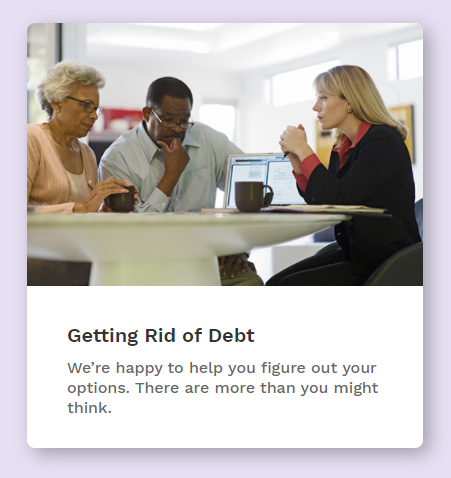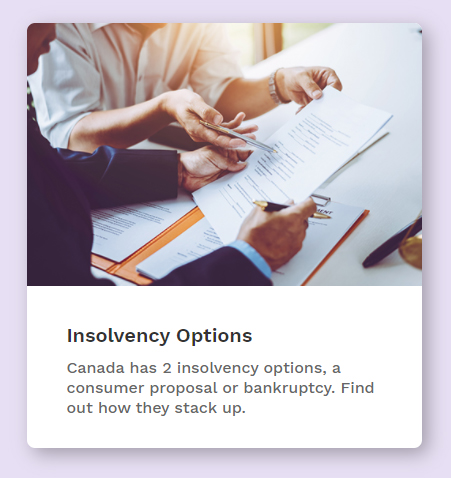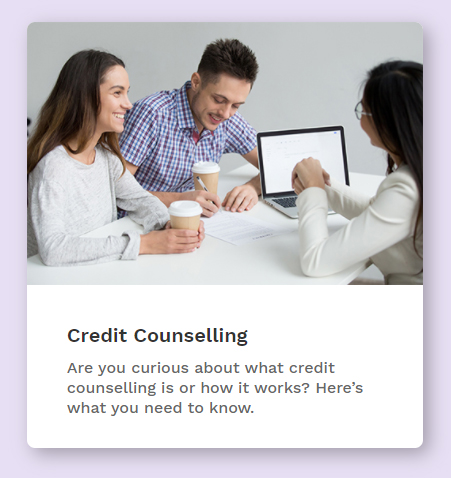Filing a Consumer Proposal
Learn the legal process of filing for a consumer proposal.
Pros & Cons of a Consumer Proposal – Get the Full Picture
What It Is & How It Can Help With Your Debts
Filing for a consumer proposal is a legal process, done through a bankruptcy trustee (officially called a Licensed Insolvency Trustee). It can be used to deal with your debts when you don’t qualify for or have been declined for a debt consolidation loan, a debt management program, and you don’t want to go bankrupt.
How to File a Consumer Proposal
Talk to a Bankruptcy Trustee
Only a bankruptcy trustee can file a consumer proposal on your behalf. The way it works is that your trustee sends out a “proposal” to your creditors asking that they accept payment of less than the full amount of your debt. Creditors holding the majority of your debts must agree to the proposal for it to work, and not all debts are eligible to be included.
You may need to seriously consider declaring bankruptcy if enough of your creditors don’t agree to the consumer proposal.
If the majority of your creditors accept the bankruptcy trustee’s proposal then you would have the opportunity to repay less than the full amount of your debt within 5 years.
Advantages and Disadvantages of Filing for a Consumer Proposal
There are many advantages and disadvantages that you should be aware of before you go through with filing a consumer proposal. It is important to consider your situation and the impact this legal process will have on your credit rating in the future.
Advantages
- No interest
- Potentially repay less than you owe
- Pauses active collection on student loans
- Alternative to bankruptcy
- Structured repayment plan that provides a way to be debt free within 5 years
Disadvantages
- It’s not private. A proposal is a matter of public record
- The court must approve it
- It’s not as fast and easy as sometimes advertised
- Creditors may reject your proposal
- Not all creditors may reduce the debt you owe them
- You may need to sell some of your assets to satisfy your creditors or include the value of your equity in a specific asset in your proposal
- If you default (miss 2 payments), you’re not able to file another proposal
- Is reported on your credit report and typically negatively impacts your credit score for 6 years
- 1 out of 5 people who successfully pay off their Consumer Proposal end up needing to repeat the process in the future
- It can put certain professional licenses at risk, and the permanent record of your insolvency may also affect some future employment opportunities.
- Secured debts can’t be put on a proposal
- Student loan payments less than 7 years old can’t be included
- Many people unknowingly enter into a consumer proposal illegally by paying someone other than a trustee for their proposal. This results in these people essentially being double charged – paying thousands twice when they only needed to pay once
Canada’s Other Debt Consolidation Options
Loans, Mortgages, Credit Cards, DMP, Settlement, Borrowing Money & More
You might be wondering what to do because you’ve been declined for a debt consolidation loan. Below is more information about consolidating your debts with a debt consolidation loan, as well as many other options.
However, if you’re feeling overwhelmed and just need someone to give you some guidance about the best options for dealing with your debts based on your financial situation, don’t hesitate to contact us and ask us your questions. We’re happy to help by phone, 1-888-527-8999, anonymous online chat, or email.
- Consolidate using a Debt Consolidation Loan
- Consolidate using a Home Equity Loan / Refinance Mortgage / Second Mortgage
- Consolidate using a Line of Credit or Overdraft
- Consolidate debts on your Credit Cards
- Consolidate using a Debt Management Program
- Consolidate by doing a Debt Settlement
- File a Consumer Proposal
- Consolidate by Borrowing from Family or Friends
Contact Us for More Information About Filing for a Consumer Proposal
Filing for a consumer proposal is just one step away from bankruptcy. Since it is a legal process, you may want to talk to one of our Credit Counsellors or your bank before you start the process. You can find more information on any of the links above or on this page about debt consolidation options and advice. We are also here to help and our service is free and confidential.
Related Topics

Getting Rid of Debt
We’re happy to help you figure out your options. There are more than you might think.

Insolvency Options
Canada has 2 insolvency options, a consumer proposal or bankruptcy. Find out how they stack up.

Credit Counselling
Are you curious about what credit counselling is or how it works? Here’s what you need to know.




